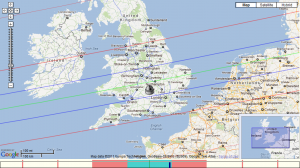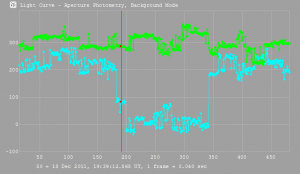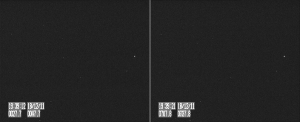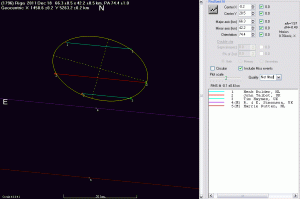This was my third positive asteroid occultation and my first with complete star disappearance. It featured a fairly faint star (mag. 11.9) with no Moon.
- Predicted event time was 19:40:19 UTC for my observing position.
- Predicted maximum duration was 8.6 seconds with a 4.1 magnitude drop.
- Position was 64 km from the predicted central line in a S direction between centre line and path edge.
- Calculated probability of seeing the occultation was 41.1%.

I recorded 640ms integrations using a Watec 120N video camera on a 200mm F/4 Newtonian telescope. Video was captured via a USB2 capture device on a laptop with VirtualDub software. I used a timestamp from a Blackbox GPS video time inserter.
The asteroid was much dimmer than the star and was not visible so the star appeared to disappear completely. The occultation occurred a minute before the predicted time which took me a bit by surprise as I had only just started recording the video feed!
This is the light curve for the event from video analysis in Tangra v1.3 software. The blue line is the measured intensity of the occulted star. The green line is the measured intensity of a nearby comparison star. The vertical red line marks the beginning of the occultation. Frame count on the x-axis and star intensity on the y-axis.

Nb. the timings below are corrected for internal delays in the camera and for the integration period.
| Start | 19:39:17.87 | ±0.33s |
| End | 19:39:24.27 | ±0.33s |
| Duration | 6.40s | ±0.66s |

There were two other successful observations of this occultation and they give an excellent chord diagram for the asteroid.
